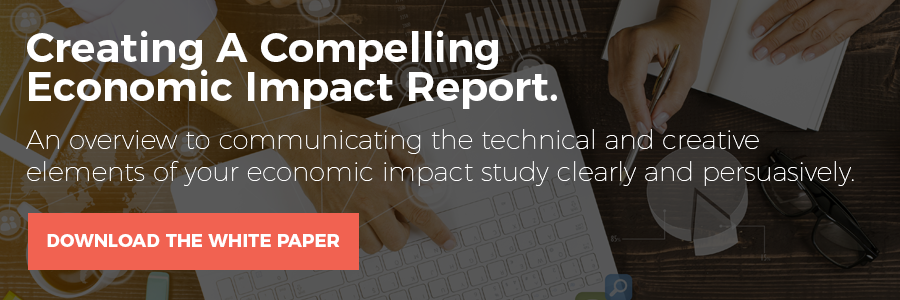The Value of Storytelling in Business
If you have kids or if you ever were a child (so everyone), you inherently understand the value of storytelling. Storytelling has been used as a very effective learning device for years. From teaching children social and language skills to formal education for adults, storytelling is used as a means to communicate all ranges of ideas.
Additionally, much of the business world has benefited from the power of storytelling to further set their brands apart. Whatever you choose to call it: marketing, salesmanship, persuasion, etc… businesses rely on storytelling to effectively convey value and achieve relevance to consumers.
While storytelling clearly has effective applications in various fields, can it also be successful when applied to interpreting economic impact studies?



The Importance of Storytelling in Economic Impact Analysis
As defined by economists, economic impact analysis “attempts to measure or estimate the change in economic activity in a specified region, caused by a specific business, organization, policy, program, project, activity, or other economic event. The study region can be a neighborhood, town, city, county, statistical area, state, country, continent, or the entire globe.”
The concept is rather simple, yet the process and scientific method to get to the point of interpreting results is no small task. Academics, consultants, and researchers alike make careers out of having a thorough methodology or standard of procedure. Once you have managed to navigate the difficulties of running an economic impact study, which is no easy feat in and of itself, the next logical question is how to translate such technical terminology and methodology into comprehendible takeaways to a wider audience. More often than not, these reports are based on projects and key decisions with large sums of capital. So the stakes are high, and the pressure to produce a credible report, even higher.
Projects that require an abundance of funding, usually attract a lot of publicity. This is not surprising because when investing large sums of money, investors expect a certain level of return. And who is going to be monitoring that? The public. Because these large projects draw so much publicity, it is essential that all of the ideas and information can be accurately presented in an organized and engaging manner. Because studies are conducted to achieve results and will be presented to key stakeholders and readers who might not have a background in economics, communicating your analysis using interesting and well organized content (employing storytelling methods) is paramount in your objectives and goals being realized.
Applying Storytelling Tactics to Communicate Your Results
While economists, academics, consultants, researchers, etc fully understand the methodology and approach when conducting an economic impact analysis, extracting meaning from results is where some may feel like they’ve entered foreign territory. Translating tables and numbers into meaningful takeaways can be assisted by employing storytelling tactics. Especially when it comes to high profile projects that attract the public eye, taking a cue from businesses who use storytelling effectively to communicate (or even taking a page from your child’s favorite book) may be a good place to start.



.png?width=80&name=IMPLAN_Logo_Print-Vector_NEW%20(2).png) Copyright 2025
Copyright 2025